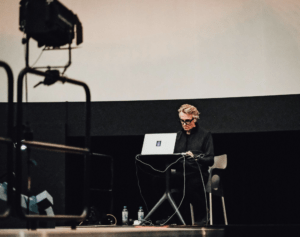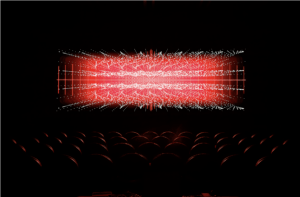Prompt
Read the chapters on Live Cinema by Gabriel Menotti and Live Audiovisual Performance by Ana Carvalho from The Audiovisual Breakthrough (Fluctuating Images, 2015).
Armed with the knowledge you gained last week by reading the chapter on VJ-ing and by watching the documentary Video Out (Finkelstein & Vlachos, 2005), write a two to three paragraph reflection on the difference between VJ-ing, Live Cinema, and Live Audiovisual Performance. Reference one contemporary artist / group / collective from each category as an example to indicate the differences in context, methodology, and technology (if any!).
VJ-ing, Live Cinema, and Live Audiovisual Performance represent distinct facets of the audiovisual arts, each with its unique characteristics.

VJ-ing typically involves real-time visual manipulation during music performances or events, often using software to mix and manipulate visuals. It often takes place in the clubs and the audience will be lost in the projections. One example is the AntiVJ artists. They create immersive installations and live performances that challenge the audience’s senses. One of their most famous shows, in which current member Simon Geilfus performed with Murcof, featured stars, lines, and chemical particles that were projected on multiple screens to create a 3D-sensory experience that had no boundaries, taking the audience through a mind-blowing journey where the light sources could barely be perceived.
Live Cinema tends to be more narrative-focused, integrating cinematic elements into live performances. Live cinema is exempt from chief constraints, namely narrative continuity and fixed spatial arrangement. Even setting up the projections is incorporated “as part of the creative process,” intensifying the practice’s kinship with the fields of expanded cinema and interactive installation. Live cinema can be characterized by storytelling. Examples can be found on the website of the live cinema festival. The artist Paraadiso, for instance, creates captivating audiovisual experiences by merging scientific data visualization with electronic sound, showcasing a more interdisciplinary approach.

Live Audiovisual Performance encompasses a broader spectrum, including both VJ-ing and Live Cinema but often places a stronger emphasis on the integration of sound and visuals as equal components. Live audiovisual performance is a term applied to contemporary artistic expressions of live manipulated sound and image, defined as time-based, media-based, and performative. Live audiovisual performance is complex because it does not comprise a specific style, technique, or medium, but instead gathers a series of common elements that simultaneously identify a group of artistic expressions as well as specific works, which don’t necessarily fit within either of the particular expressions that constitute the group. One example is the EKO by Kurt Hentschläger. It is an audiovisual performance with LED wall display and surround sound. EKO is performed live in the splendid void of pitch-darkness. Erasing the audience’s perceptual boundaries, the absence of light is interrupted for only fractions of seconds with bursts of micro-animated abstract forms.